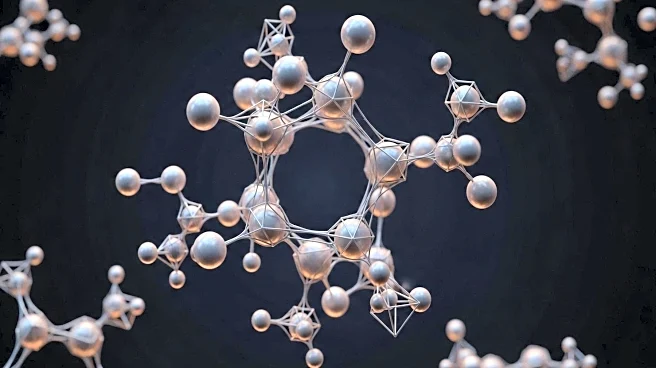What's Happening?
Recent research has highlighted discrepancies in predicted interaction energies for large molecules using two highly accurate many-electron theories: diffusion Monte Carlo (DMC) and coupled-cluster theory
(CCSD(T)). The study investigates the reasons behind these discrepancies, focusing on the parallel displaced benzene dimer and coronene dimer. The research employs a plane wave basis set to assess the quality of previously used atom-centered basis functions and explores higher-order contributions to the many-electron perturbation expansion. The findings suggest that the CCSD(T) theory overestimates interaction energies due to truncation of the triple particle-hole excitation operator.
Why It's Important?
Understanding the discrepancies in noncovalent interaction energies is vital for molecular quantum chemistry, particularly for large molecular complexes. Accurate predictions are crucial for designing efficient materials and understanding molecular interactions. The study's findings could lead to improved computational methods, enhancing the reliability of predictions in molecular chemistry. This has implications for industries relying on molecular design, such as pharmaceuticals and materials science, where precise interaction energies are essential for product development.
What's Next?
The study suggests that using CCSD(cT) theory instead of CCSD(T) could restore agreement with DMC findings, offering a more accurate approach for predicting noncovalent interaction energies. Future research may focus on refining computational methods to address the overestimation issues identified in CCSD(T) theory. Additionally, the study's methodology could be applied to other molecular systems, potentially leading to broader improvements in computational chemistry techniques.
Beyond the Headlines
The discrepancies in interaction energies have deeper implications for the field of quantum chemistry. The study challenges the 'gold standard' status of CCSD(T) theory, prompting a reevaluation of widely-used computational methods. This could lead to a paradigm shift in how molecular interactions are studied, with a focus on developing more accurate and reliable theories.











